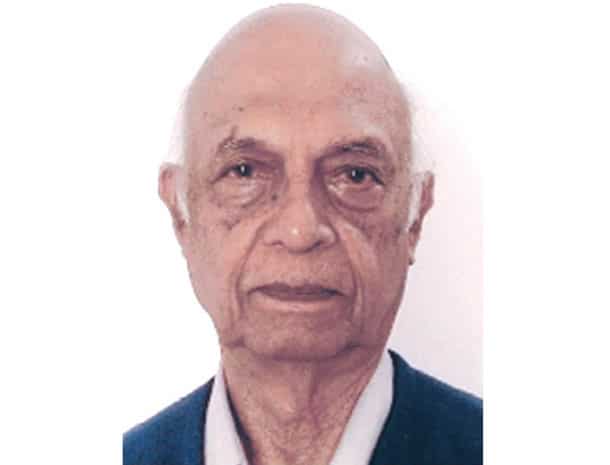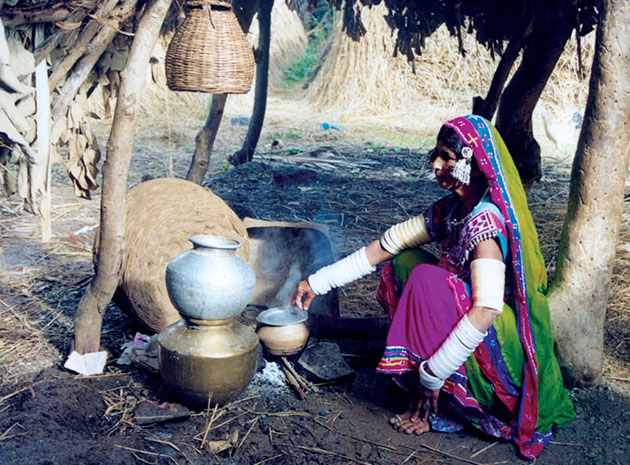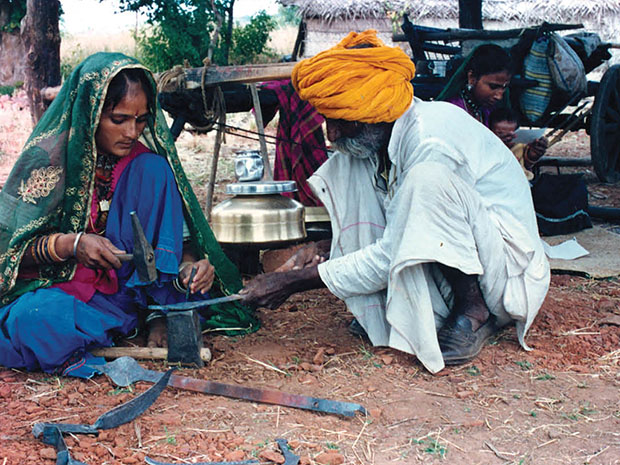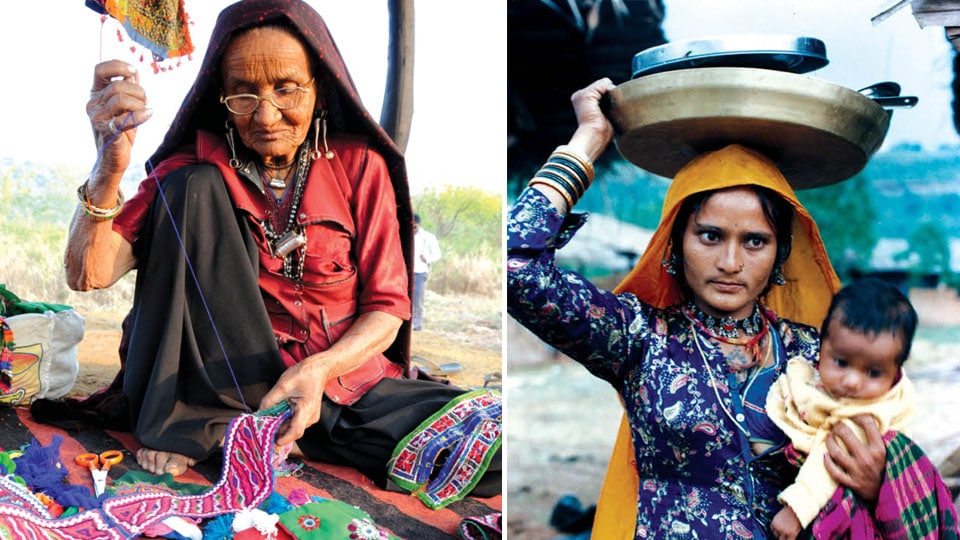Mysuru: Indira Gandhi Rashtriya Manav Sangrahalaya (IGRMS), Southern Regional Centre, Mysuru, is organising an exhibition on ‘Nomads of India’ at Wellington House, Irwin Road in city from Dec. 10. The exhibition will be inaugurated by Prof. P.K. Misra, Anthropologist and President of Anthropological Association, Mysore, in the presence of Prof. Sarit Kumar Chaudhuri, Director and Dilip Singh, Joint Director, IGRMS Bhopal, at 4.30 pm. Here we publish a write-up on the ‘Nomads of India.’ Read on…
India is a country of wonders and wanderers. It is home to tribes and communities that tend to travel more than others. Some of them travel out of necessity and others choose to be on road. Most of these tribes are hard to find as they have become a part of their respective local society. But their rich and unique heritage speaks volumes about them.

Prof. P.K. Misra
These wanderers were once part of India’s mainstream. They meshed comfortably with the villagers who lived along their annual migration routes. In the rapidly modernising India of call centres and brand-obsessed youth, nomads are in a losing battle. Fragmented by caste, language and region, the nomads are ignored by politicians and, in contrast to other down-trodden groups, have reaped few benefits from social welfare schemes.
The exhibition at IGRMS gives a glimpse of nomadic communities of India and their lifestyle adapted to different environmental conditions. A variety of objects supported by photographs focus on their material culture and their household items, textiles and ornaments illustrate the rich culture as well as their knowledge systems.
GUJJAR-BAKARWAL: Gujjar-Bakarwal, the transhumance pastorals of Himalayas are two major nomadic tribes of Jammu and Kashmir which constitutes the third largest ethnic group with a population of about 11.9% of the total population in J&K.
These tribal groups always move from the warm lowland valleys to the cool highland valleys in summer and return to lowland valleys following the same precise and repeated routes in winter along with the herds of livestock to exploit the seasonal availability of pastures.
Although both the tribal group practice livestock rearing as the traditional mainstay of their economy like nomads, some of them occupy intermediate position between nomadism and a sedentary mode of life by practising agriculture.
Belonging to the same ethnic group, Gujjars possess large herds of buffaloes while Bakarwals are associated with goat and sheep-rearing. They play a crucial role in meeting the requirement of milk and meat.

CHANGPAS: Changpas the nomadic pastoralists mostly inhabited Changthang area in south east region of Ladakh. Changthang is characterised by extreme coldness, aridity, high radiation and strong winds. Due to the low precipitation, plant productivity is very low.
They are mostly dependent on herds of animals for their daily sustenance. Changpas do not own any immovable assets and they only own yaks, goats and sheep which they guard with the help of their dogs and riding horses.
These nomadic shepherds live in tent locally known as rebo made of coarse yak hair. They set up camp at a site for one or two months and then move on in search of better pastures. Women weave woollen cloth from which they make their wearing clothes, blankets and rugs. Men weave tents and bags to carry things on the back of sheep and goats.
RABARIS: Rabaris follow a nomadic way of life concentrated in Kutch area of Gujarat mostly covered by salt marshlands of the Rann, living in tents or under the open sky and raising cattle, camels and goats. They live in circular huts, known as “Bhunga” which are known for their structural stability during earthquakes and climate-responsive.
Bhunga is constructed using locally available materials like clay, cow dung, bamboo, timber, Phada-Kheep grass, Arisa (coloured decorative glasses) etc. The shape and structure is ideal for desert environment.
Rabaris are divided into three sub- groups Kutchhi Rabari (Lakpath and Nakthrana areas), Dhebaria Rabari (South and South-east of Bhuj, Anjar and Mandvi) and Dhebaria Rabari (South and South-east of Bhuj, Anjar & Mandvi).
Rabaris are vegetarians and the habit of consuming Camel milk enables them to survive in extremely hot climatic condition. Their staple food is Bajra, Jowar and Maize. Liquor is not consumed but they frequently use Hookah.
Rabari women feel proud of her tattooed body. Tattooing is a common practice among Rabari women generally made on forearms, neck, ankle and other parts which are not covered by clothes.

GADDIS: Gaddis, a wandering tribe lives in the mountainous terrains of Himalayas mainly concentrated in Bharmour Tehsil of Chamba district of Himachal Pradesh. Traditionally Gaddis are shepherds.
They are almost on the move with their flocks of sheep. In summer, they visit the alpine pastures as grazing places are abundant but in winter they move downwards to sub-mountainous regions of Kangra, Mandi, and still downwards the plains of Punjab.
The staple food of the Gaddis is very simple and consists of barley and maize flour, unhusked rice and pulses. They mostly use honey in place of sugar and prefer rock salt.
Gaddis are fond of local drink called lugadi. The dress and costume of Gaddis are unique. Men wear a frock like cloak of white wool called chola which is secured around the waist with a rope called dora and woollen pyjama as lower garment. They wear a cap and thick leather shoes, usually handmade, called jutti are part of the dress. Women wear a long skirt and shawl called pattu and the head garment called joji.
GADULIA LOHAR: The Gadulia Lohars are mainly found in Rajasthan, Gujarat, Madhya Pradesh, Punjab, Western Maharashtra and Western Uttar Pradesh. The main traditional occupation of the Gadulia Lohar is blacksmith work. The abode of a Gadulia Lohar is his tiny bullock cart which contains all the possessions and necessities which may require for his living.
These people are on the move round the year on their carts from one place to another. In the working season, they camp at certain places for a short time during which they make and mend iron implements for villagers. In the off season, they camp at one place for long time. The principal food of the Gadulia Lohar is bread, locally called sogra. Loaves are made of flour of wheat or wheat mixed with millet (jowar). Bajra is generally consumed in winter.
BROKPA: The Brokpas are small community of Dard people residing in the Dard villages of Dah, Hanu, Darchiks and Garkone about 130 kms north east of Kargil. They follow Buddhism but not fully integrated into the mainstream of Ladakh’s Buddhist society.
They have sharp features, cat-eyed generally tall and well-built. Their women love to dress with ethnic jewellery and heavy ornaments. On their colourful caps they adorn with flowers, dozens of needles etc. Their caps and dresses are homespun from the wool obtained from their sheep. The dress of Dard is completely different from the rest of dresses of Ladakh. Their main occupation is farming.
Follow Star of Mysore on Instagram www.instagram.com/starofmysore








Recent Comments